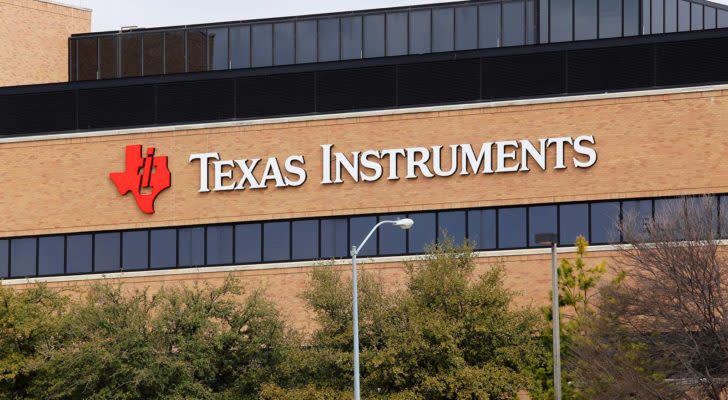7 High-Yield Blue Chips Suitable for Any Retiree
Before extolling the benefits of high-yield blue-chip stocks, it’s important to acknowledge the reality that many investors are feeling. Long-term stock investors have had to muddle through challenging macroeconomic headwinds in 2023. High inflation, rising interest rates, bank failures, two government shutdowns averted, and a new war that is fueling concerns about a broader conflict.
Have I missed anything? Probably. 2023 has been a year many investors would like to forget.
It’s times like these when you hear the tongue-in-cheek remarks about 401(k)’s becoming 201(k)’s. But seeing your retirement savings shrink is no laughing matter.
InvestorPlace - Stock Market News, Stock Advice & Trading Tips
That’s where high-yield blue-chip stocks come in. These stocks are known for their defensive characteristics. They won’t outperform growth stocks when the bulls are pushing the market higher. On the other hand, they tend to perform less badly when the market is in a correction. They won’t be the names that get bragged about on the golf course. But you’ll be glad you own them when it’s time to play pickle ball.
And the real benefit to these stocks is that they pay a dividend which increases your total return. Over time, a strong total return is the key to building wealth. Here are seven high-yield blue-chip stocks to help you meet your retirement goals no matter where you are on your investment journey.
AbbVie (ABBV)

Source: Valeriya Zankovych / Shutterstock.com
AbbVie (NYSE:ABBV) is first on this list of high-yield blue-chip stocks that make sense in any retirement portfolio. Biopharmaceutical stocks are consistently affected by short-term news. In the case of AbbVie, the stock is down about 14% in 2023 over concerns of a patent cliff for its flagship drug, Humira.
A patent cliff occurs when a drug, like Humira, is subject to competition from generic (and lower cost) brands. However, the impact of that competition is not taking as big of a bite out of Humira sales as feared. Plus, the company is getting strong performance from two new drugs, Skyrizi and Rinvoq.
The message for long-term investors is that with a company like AbbVie, it’s about the pipeline. AbbVie has a deep one that should continue to reward investors for years.
The five-year total return on ABBV stock is 92.81%. That means $1,000 invested in 2018 would be worth 1,920,81. Part of that total return comes from the company’s dividend which currently yields 4.3% and has a $5.92 annual payout per share, for now. AbbVie is a Dividend King which means it’s increased its dividend for at least 50 consecutive years.
Johnson & Johnson (JNJ)

Source: Alexander Tolstykh / Shutterstock.com
Johnson & Johnson (NYSE:JNJ) has been a tough stock for long-term investors in the last five years. The total return on JNJ stock has been just 17.7%. At a little over 3% a year, that hasn’t been keeping up with inflation.
There are reasons for that. The company has been trying to reach a settlement in its talc lawsuit. But even when it does, investors will wait to see the effect on the company’s bottom line.
The company also completed a spinoff of its consumer health brands division that will allow it to focus on its core business. The new company, Kenvue (NYSE:KVUE), went public earlier this year.
Sure, JNJ stock hasn’t done much price wise in the last five years. But with the lawsuit issue mostly behind it and the company becoming more streamlined, it’s not hard to imagine the stock will perform much better in the next five years. That will give long-term investors a reason beyond the dividend to be glad they own the stock.
Duke Energy (DUK)

Source: jadimages / Shutterstock.com
When you think about high-yield blue-chip stocks, utility companies often come to mind. These are names your grandparents held in their retirement accounts. And Duke Energy (NYSE:DUK) is a top name to consider. But there are reasons to believe that Duke isn’t your grandfather’s utility stock – at least not completely.
Duke owns 50,000 megawatts of power in six states including Florida. The number of people who are moving or have already moved to the Sunshine State gives you an idea of the customer base that the utility will have in coming years.
The total return for DUK stock in the last five years is 26.3%. And when you consider that Duke’s dividend yield is 4.63%, you know that is where investors are getting most of their growth. Still, at a time when many companies are warning of a profit recession, Duke projects 5% to 7% EPS growth through 2027 that will put a floor on DUK stock.
Williams Companies (WMB)

Source: rafapress / Shutterstock.com
The world is clearly making a pivot to renewable energy. And right now, natural gas is one form of clean energy that’s abundant and rising in price. That brings us to the Williams Companies (NYSE:WMB). The midstream company is one of the leading distributors of natural gas in the country. The company’s operations span 30,000 miles in 25 states.
And that’s just in the United States. In a recent interview with CNBC, CEO Alan Armstrong, said the company is well positioned to handle the expected surge in natural gas demand in coming years whether in the U.S. or abroad.
Williams Companies has a five-year total return of 93.37%. That’s a 930.37 increase to a $1,000 investment. And there’s reason to believe that kind of performance is sustainable. Williams has paid a quarterly dividend for more than 50 years. That dividend currently yields 5.14%. This is a stock that’s about as steady as it gets. The company has a forward P/E of just 17x earnings.
PepsiCo (PEP)

Source: monticello / Shutterstock
Another area where you can look for defensive stocks is in consumer staples. PepsiCo (NASDAQ:PEP) may not fit the classic definition of a staples stock. But don’t tell that to shareholders. The company continues to deliver quarter after quarter.
The main takeaway for investors is the company’s pricing power. As inflation has run hot, Pepsi has shown the ability to pass along at least a portion of its costs. That’s supported earnings growth which Pepsi is happy to return to shareholders in the form of stock buybacks and dividends.
You can flip a coin and land on Coca-Cola (NYSE:KO) here. Or heck, just own both. But if you have to pick just one, PEP stock looks like a better choice in terms of total return. You’re getting high single-digit stock price growth over the last five years and a dividend with a yield of 3.03% and a payout of $5.06 per share annually. That works out to a 65% total return in the last five years.
Texas Instruments (TXN)

Source: Katherine Welles / Shutterstock.com
Texas Instruments (NASDAQ:TXN) is a conservative play among semiconductor stocks. The company won’t make investors forget about Nvidia (NASDAQ:NVDA). In fact, the company’s products aren’t widely adopted in the artificial intelligence space.
But the company’s semiconductor chips are used in a range of applications, including AI, that gives the company a broad customer base and one of the healthiest operating margins in the sector. Arguably that hasn’t done much for investors in 2023. The company’s revenue and earnings are both down year-over-year. Not surprisingly, so is TXN stock which is down over 8% in 2024.
But this is about long-term growth, and that’s where the company shines. In the past
Public Storage (PSA)

Source: Ken Wolter / Shutterstock.com
When it comes to high-yield blue-chip stocks, real estate investment trusts (REITs) come to mind. These companies pay regular, in many cases monthly, dividends. And because of their structure they are required to return at least 90% of their earnings to shareholders in the form of dividends.
As its name implies, Public Storage (NYSE:PSA) is a REIT that owns, acquires, develops and operates self-storage facilities in the United States and Europe. As of October 2023, the company had properties in 40 states. PSA stock has had a total return of 61% in the last five years.
Public Storage is agnostic to the housing market. People need to store their stuff and Public Storage owns the facilities that help them do that. There could also be a longer-term trend here of downsizing to more affordable living spaces. But on the premise that you can’t sell everything, there will be demand for storage units well into the future.
On the date of publication, Chris Markoch did not have (either directly or indirectly) any positions in the securities mentioned in this article. The opinions expressed in this article are those of the writer, subject to the InvestorPlace.com Publishing Guidelines.
Chris Markoch is a freelance financial copywriter who has been covering the market for over five years. He has been writing for InvestorPlace since 2019.
More From InvestorPlace
ChatGPT IPO Could Shock the World, Make This Move Before the Announcement
Musk’s “Project Omega” May Be Set to Mint New Millionaires. Here’s How to Get In.
The Rich Use This Income Secret (NOT Dividends) Far More Than Regular Investors
The post 7 High-Yield Blue Chips Suitable for Any Retiree appeared first on InvestorPlace.
